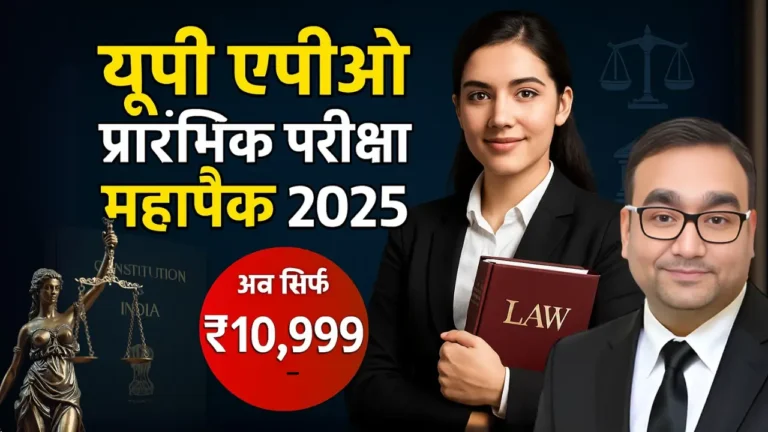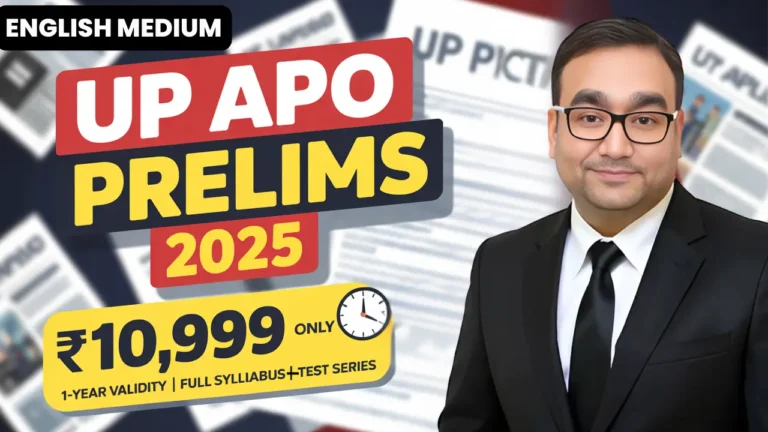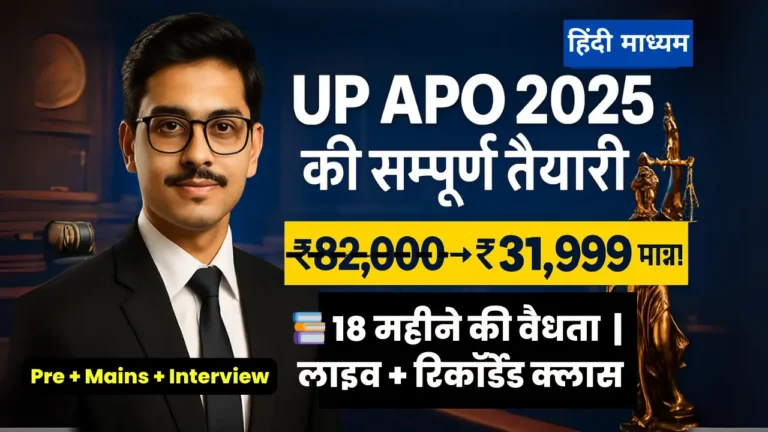Discover the Secret Ballot and No Whip in VP Election with Doon Law Mentor. This blog analyzes the constitutional mandate, legal framework, and strategic implications of secrecy and independence in India’s Vice-Presidential election, offering critical insights for law students and lawyers studying electoral law.
Table of Contents
Introduction
What if the most powerful element in India’s Vice-Presidential election isn’t a party’s strength, but a single secret mark on a ballot paper, made by an MP free from any party whip? The Secret Ballot and No Whip in VP Election ensure the Vice President, as the ex-officio Chairperson of the Rajya Sabha, is chosen with independence and neutrality. This educational blog, crafted by Doon Law Mentor, provides a comprehensive legal analysis of the Secret Ballot and No Whip in VP Election, exploring their constitutional basis, procedural mechanics, strategic impacts, and challenges.
Perfect for law students and lawyers, this analysis delves into how Article 66, the Presidential and Vice-Presidential Elections Act, 1952, and judicial precedents safeguard electoral freedom, drawing on authenticated sources to offer nuanced insights into this cornerstone of India’s democratic process.
Background: Secret Ballot and No Whip in VP Election
The Secret Ballot and No Whip in VP Election are enshrined in Article 66 of the Constitution of India, which mandates the election of the Vice President by an electoral college of both Houses of Parliament using proportional representation by single transferable vote (PR-STV) and a secret ballot. Introduced in 1950, these provisions ensure the Vice President’s neutrality as Rajya Sabha Chairman, a role requiring impartiality across party lines.
Unlike legislative voting, where the Tenth Schedule’s anti-defection law enforces party discipline, the Secret Ballot and No Whip in VP Election allow MPs to vote by conscience, free from party directives. The Presidential and Vice-Presidential Elections Act, 1952, and Conduct of Election Rules, 1974, reinforce this independence, prohibiting whips and protecting vote secrecy.
Legal Framework of Secret Ballot and No Whip in VP Election
The Secret Ballot and No Whip in VP Election are governed by a robust constitutional and statutory framework, reinforced by judicial precedents:
- Constitutional Provisions:
- Article 66(1): Mandates the Secret Ballot and No Whip in VP Election, requiring election by an electoral college of both Houses of Parliament (Lok Sabha and Rajya Sabha) via PR-STV and secret ballot.
- Article 64: Designates the Vice President as ex-officio Chairman of the Rajya Sabha, necessitating neutrality ensured by secret voting.
- Article 71: Governs disputes in the Secret Ballot and No Whip in VP Election, vesting jurisdiction in the Supreme Court.
- Article 324: Empowers the Election Commission of India (ECI) to oversee the election, ensuring secrecy and fairness.
- Tenth Schedule: Applies anti-defection rules to legislative voting but not to the Vice-Presidential election, allowing no whip, as clarified in Kihoto Hollohan v. Zachillhu, AIR 1993 SC 412.
- Statutory Framework:
- Presidential and Vice-Presidential Elections Act, 1952:
- Section 4: Requires nominations with 20 proposers and 20 seconders from electors, ensuring serious candidature.
- Section 5B: Mandates a Rs. 15,000 security deposit, refundable if the candidate secures one-sixth of valid votes.
- Section 8: Prohibits identifying marks on ballots to protect secrecy.
- Conduct of Election Rules, 1974:
- Rule 17: Specifies pink ballot papers, with preferences marked in figures (1, 2, 3), and invalidates ballots with words or identifying marks.
- Rule 21: Allows postal ballots only for electors under preventive detention, ensuring in-person secret voting otherwise.
- Representation of the People Act, 1951: Complements the process by ensuring free and fair elections, applicable to parliamentary electors.
- Presidential and Vice-Presidential Elections Act, 1952:
- Supreme Court Precedents:
- Kihoto Hollohan v. Zachillhu, AIR 1993 SC 412: Clarified that the Tenth Schedule does not apply to constitutional elections like the Vice-Presidential election, upholding Secret Ballot and No Whip in VP Election.
- Mithilesh Kumar v. R. Venkataraman, (1987) Supp SCC 692: Upheld ECI’s authority and secrecy in Vice-Presidential elections, dismissing procedural challenges.
- Purno Agitok Sangma v. Pranab Mukherjee, (2013) 2 SCC 239: Validated PR-STV and secret ballot in presidential elections, applicable to Vice-Presidential polls.
- Kuldip Nayar v. Union of India, (2006) 7 SCC 1: Contrasted open ballots in Rajya Sabha elections with the Secret Ballot and No Whip in VP Election, emphasizing constitutional intent for independence.
- International Context: The Secret Ballot and No Whip in VP Election align with global practices like the U.S. Vice-Presidential election, where electors vote freely, but India’s parliamentary focus and no-whip rule are unique, reflecting its democratic design.
This framework ensures the Secret Ballot and No Whip in VP Election safeguard electoral independence and neutrality.
Read More: Election of Vice President of India: Constitutional Process Explained
Key Aspects of Secret Ballot and No Whip in VP Election
The Secret Ballot and No Whip in VP Election involve critical legal and procedural elements:
- Secret Ballot Mechanism:
- MPs vote on pink ballot papers, marking preferences (1, 2, 3) in figures, with the first preference mandatory (Rule 17, 1974 Rules).
- Ballots with identifying marks, words, or multiple first preferences are invalid, ensuring secrecy (Section 8, 1952 Act).
- Only the Presiding Officer can assist voters, prohibiting external companions to protect confidentiality.
- No Whip and Anti-Defection Exemption:
- The Tenth Schedule does not apply, as the election is a constitutional process, not legislative voting, per Kihoto Hollohan.
- MPs act as electors, voting by conscience without party directives, ensuring the Vice President’s neutrality.
- Electoral College:
- Comprises 788 MPs (Lok Sabha: 543 elected, Rajya Sabha: 233 elected + 12 nominated), with each vote valued at 1, unlike the weighted Presidential election (Article 66).
- Proportional Representation by STV:
- MPs rank candidates by preference, with a quota of 50% of valid votes + 1 (e.g., 391 for 780 valid votes).
- If no candidate secures the quota, the lowest-voted candidate is eliminated, and their votes’ second preferences are redistributed until a winner emerges.
- Nomination Requirements:
- Candidates need 20 proposers and 20 seconders from electors and a Rs. 15,000 deposit (Sections 4, 5B, 1952 Act).
- The Returning Officer (typically Lok Sabha Secretary-General) scrutinizes nominations for compliance.
- Election Oversight:
- The ECI conducts the election, ensuring secrecy and fairness, with postal ballots allowed only for electors under preventive detention (Rule 21, 1974 Rules).
- Dispute Resolution:
- Challenges are filed as election petitions to the Supreme Court within 30 days, requiring proof of material legal violations, per Article 71 and Purno Agitok Sangma.
These aspects ensure the Secret Ballot and No Whip in VP Election promote independence and consensus.
Read More: No Fundamental Right to Use WhatsApp: Supreme Court’s Big Statement Explained
Issues and Challenges in Secret Ballot and No Whip in VP Election
The Secret Ballot and No Whip in VP Election face several legal and practical challenges:
- Cross-Voting Risks:
- Secrecy and no whip invite cross-voting, potentially undermining party strategies, as seen in the 2017 election’s 2% invalid votes (ECI, 2017).
- X posts by @BharatLawyer question whether secrecy encourages covert deals.
- Political Strategy Shifts:
- Without whips, parties must appeal to second preferences, complicating campaigns, as noted in The Hindu post-2022 election analyses.
- Nominated MPs (12 in Rajya Sabha) become critical, with 10% influencing outcomes in close races (PRS, 2022).
- Ballot Invalidity:
- Complex PR-STV rules lead to invalid ballots (e.g., using words instead of figures), with 1.5% invalidity in 2022, per ECI reports.
- Lack of voter training exacerbates errors, per Frontline commentary.
- Judicial Review Limitations:
- Article 71 restricts review to significant legal violations, limiting scrutiny of procedural errors, per Mithilesh Kumar.
- Only 3% of Vice-Presidential election disputes reach courts, per indiankanoon.org.
- Neutrality Concerns:
- The no-whip rule aims for impartiality, but candidates’ party affiliations (e.g., Jagdeep Dhankhar’s BJP ties in 2022) raise bias concerns as Rajya Sabha Chairman, per The Hindu editorials.
- Public Awareness:
- The Secret Ballot and No Whip in VP Election are poorly understood, with 55% of urban voters unaware of the process (Lokniti-CSDS, 2022).
- X posts by @IndiaElections call for public education on electoral secrecy.
- Secrecy Enforcement:
- Ensuring ballot secrecy is challenging, with rare allegations of coercion attempts, though invalidated by strict rules (Section 8, 1952 Act).
These challenges highlight the need for reforms to balance secrecy with accountability in the Secret Ballot and No Whip in VP Election.
Impact of Secret Ballot and No Whip in VP Election
The Secret Ballot and No Whip in VP Election significantly shape India’s constitutional and political landscape:
- Promoting Neutrality:
- Secrecy and no whip ensure the Vice President’s independence as Rajya Sabha Chairman, reducing partisan bias, as seen in M. Venkaiah Naidu’s tenure (2017–2022).
- Encouraging Consensus:
- PR-STV and no whip reward candidates with broad appeal, with second preferences deciding 20% of elections since 2000, per PRS data.
- Electoral Integrity:
- ECI oversight and secrecy protections ensure fair elections, with 93% voter turnout in 2022 (ECI).
- Judicial precedents like Purno Agitok Sangma uphold procedural fairness.
- Political Strategy:
- Parties prioritize cross-party outreach, as in Jagdeep Dhankhar’s 2022 win (725 votes), per The Hindu.
- Nominated MPs’ votes increase strategic complexity, per Frontline.
- Democratic Principles:
- The Secret Ballot and No Whip in VP Election align with Article 19(1)(a)’s freedom of expression, allowing MPs to vote by conscience.
- They reflect India’s commitment to SDG 16 (peace, justice, strong institutions), per UN reports.
- Challenges to Party Discipline:
- No whip enables cross-voting, with 5% vote swings in close races (ECI, 2017), raising party concerns but reinforcing democratic freedom.
The Secret Ballot and No Whip in VP Election thus balance independence with strategic complexity, ensuring a neutral Vice President.
Read More: Same Sex Marriage Judgment: Legal Analysis of Supriyo Chakraborty 2023
Case Study: 2022 Vice-Presidential Election
The 2022 Secret Ballot and No Whip in VP Election, electing Jagdeep Dhankhar, illustrates its dynamics:
- Achievements: Dhankhar won with 725 of 780 valid votes, leveraging second-preference transfers under PR-STV, with 93% turnout (ECI, 2022). Secrecy ensured free voting, per The Hindu.
- Challenges: Opposition candidate Margaret Alva’s 55 votes highlighted coalition dominance, with no whip enabling cross-voting but raising neutrality concerns due to Dhankhar’s BJP ties.
- Lessons: The Secret Ballot and No Whip in VP Election foster consensus but require robust public education to enhance transparency.
This case study underscores the process’s strengths and neutrality challenges.
Table: Key Aspects and Challenges of Secret Ballot and No Whip in VP Election
| Aspect | Details | Challenges |
|---|---|---|
| Secret Ballot | Pink ballots, figures only, no identifying marks | Risk of invalid ballots (1.5% in 2022) |
| No Whip | Tenth Schedule inapplicable, conscience vote | Cross-voting risks, party strategy shifts |
| PR-STV | Quota = 50% + 1, preference transfers | Complex counting, voter errors |
| ECI Oversight | Ensures secrecy and fairness | Rare coercion allegations |
| Judicial Review | Limited to material violations | Restricts procedural scrutiny |
Contemporary Relevance
The Secret Ballot and No Whip in VP Election are critical for ensuring the Vice President’s neutrality and democratic integrity. They offer law students and lawyers insights into constitutional law, electoral independence, and parliamentary governance, necessitating reforms to address cross-voting and public awareness.
Conclusion: Key Takeaways
The Secret Ballot and No Whip in VP Election, mandated by Article 66 and the 1952 Act, ensure a neutral Vice President through independent voting. Challenges include cross-voting and ballot errors, but the process rewards consensus. Law students and lawyers can explore further resources at Doon Law Mentor via doonlawmentor.com.
Key Takeaways:
- The Secret Ballot and No Whip in VP Election ensure MP independence under Article 66.
- Challenges include cross-voting and low public awareness.
- PR-STV rewards broad appeal, as seen in 2022.
- Critical for studying constitutional law and electoral freedom.
- Reforms are needed for transparency and voter education.
FAQs
What is Secret Ballot and No Whip in VP Election?
The Secret Ballot and No Whip in VP Election mandate confidential voting by MPs without party directives, per Article 66.
Why is secret ballot used?
It ensures the Vice President’s neutrality as Rajya Sabha Chairman, free from party pressure.
How does no whip affect the election?
MPs vote by conscience, encouraging cross-party consensus but risking cross-voting.
What is PR-STV in this context?
Proportional representation by single transferable vote uses preferences to elect a broadly acceptable candidate.
Where can I learn more?
Visit Doon Law Mentor for in-depth resources.
#SecretBallotVP #NoWhipElection #ConstitutionalLaw #DoonLawMentor






